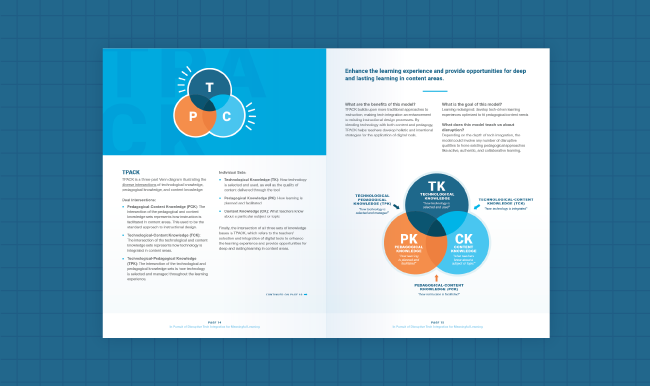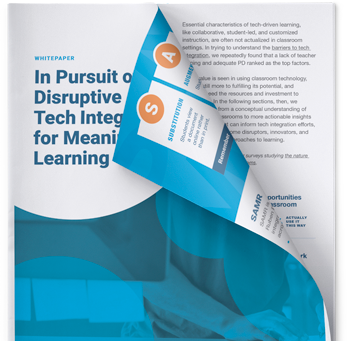After weeks or months of online-only learning, students, teachers, administrators and parents have returned to classrooms with greater access to devices and internet connection, as well as new digital skills. In that sense, the disruption in the classroom that we imagined when contemplating this white paper — the disruption that would require meaningful tech integration — has already happened. Technology was forcefully and somewhat chaotically integrated into every classroom, ready or not, in 2020.
Rather than make “In Pursuit of Disruptive Tech Integration for Meaningful Learning” obsolete, the pandemic made it even more urgent and important. With the immediate crisis now behind us, educators must assess how to thoughtfully and meaningfully integrate technology into their classrooms, creating a new normal. This prescient white paper is your guide for these times.

Christine Byrd
Author at Learning.com
Christine has over 17 years of experience as an award-winning writer, thorough researcher, detail-oriented editor, and communications strategist. She specializes in providing internal and external communications for corporate, academic and nonprofit leaders.
Further Reading
The Future of Learning: AI Lessons in Schools and Beyond
AI has already had a major impact on how students approach their learning, yet the technology is only just getting started. Wondering what else is...
Why Digital Safety Matters: Keep Your Kids Safe & Healthy Online
From schoolwork to texting friends, and gaming to streaming tv, children today are spending more time than ever on screens. In fact, an average of...
What is the Role of AI in Schools? Today and in the Future
For hundreds (or even thousands) of years, schools have been all about the student-teacher relationship. But with the AI era firmly upon us, that...





